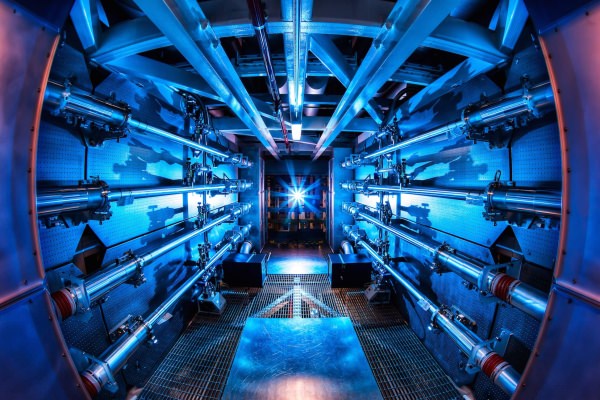The Center for Energy Research and Lawrence Livermore Lab Collaborate on Study of ‘Matter Under Extreme Conditions’
Article by Paul K. Mueller for UC San Diego News CenterMarch 5, 2015
 From the unthinkable extremes of temperature and pressure in the hearts of stars, to the behavior of electrons in computer chips, the study of matter under extreme conditions involves disciplines as varied as engineering, astrophysics, and supercomputing – and gains in importance as we seek to harness the benefits of matter “in extremis.”
From the unthinkable extremes of temperature and pressure in the hearts of stars, to the behavior of electrons in computer chips, the study of matter under extreme conditions involves disciplines as varied as engineering, astrophysics, and supercomputing – and gains in importance as we seek to harness the benefits of matter “in extremis.”
To help pioneer those potential breakthroughs, the Center for Energy Research (CER) at UC San Diego and the Lawrence Livermore National Laboratory (LLNL) will collaborate on a new Center for Matter under Extreme Conditions (CMEC).
At UC San Diego, Farhat N. Beg, professor of mechanical and aerospace engineering and Associate Director of the Center for Energy Research who helped organize the agreement, said the collaboration will further strengthen the collaboration between UC San Diego and LLNL, as well as among the Dept. of Energy’s diverse R&D community, the state of California, and the broader University of California academic community, including undergraduate and graduate students.
“The Center for Matter under Extreme Conditions will be mutually beneficial, and will involve developing student curricular training, research training, research supervision, joint faculty appointments, and visiting professorships for the LLNL scientists,” Beg said. “To enhance the research and training experience, we will initiate the annual ‘Edward Teller Workshop Series,’ meant to be a focal venue for national research in this area.”
“We are building on a recent placement of several Ph.D. graduates at LLNL in areas pertinent to understanding matter under extreme conditions,” said Beg. “Among our many plans, we will jointly develop a cross-departmental curriculum for students at UC San Diego – available over a video link to other UC campuses – in addition to shorter ‘intensive’ courses for visiting students. We will be preparing both undergraduate and graduate students to step into careers at the lab.”
Dr. Gilbert Collins, directing LLNL’s participation in the new center, said the formal partnership is the result of ongoing placements of UC Diego students at the national lab.
“This Center offers an opportunity to make a profound impact on understanding the origins of stars, the evolution of planets, a new generation of exotic materials whose properties are dominated by core electron chemistry, and the potential for controlled thermonuclear plasmas for energy,” said Collins. “This is indeed a new science frontier, rich with unexplored physics phenomena and enabled by a new generation of sophisticated laboratory systems and advanced computing.”
Research experience in multi-disciplinary fields for students at the center will be provided by the Jacobs School of Engineering – particularly its departments of mechanical and aerospace engineering, electrical and computer engineering, and structural engineering – the Department of Physics, Material Sciences, the Center for Energy Research, the Center for Astrophysics and Space Sciences, the San Diego Supercomputer Center, and other academic and research units.
“We are creating new science opportunities,” Beg said, “that we hope will bring research resources from the Department of Energy and other agencies to the University of California.”
(picture above: The preamplifiers of the National Ignition Facility are the first step in increasing the energy of laser beams as they make their way toward the target chamber. NIF recently achieved a 500 terawatt shot - 1,000 times more power than the United States uses at any instant in time. Photo credits: Damien Jemison/LLNL)
